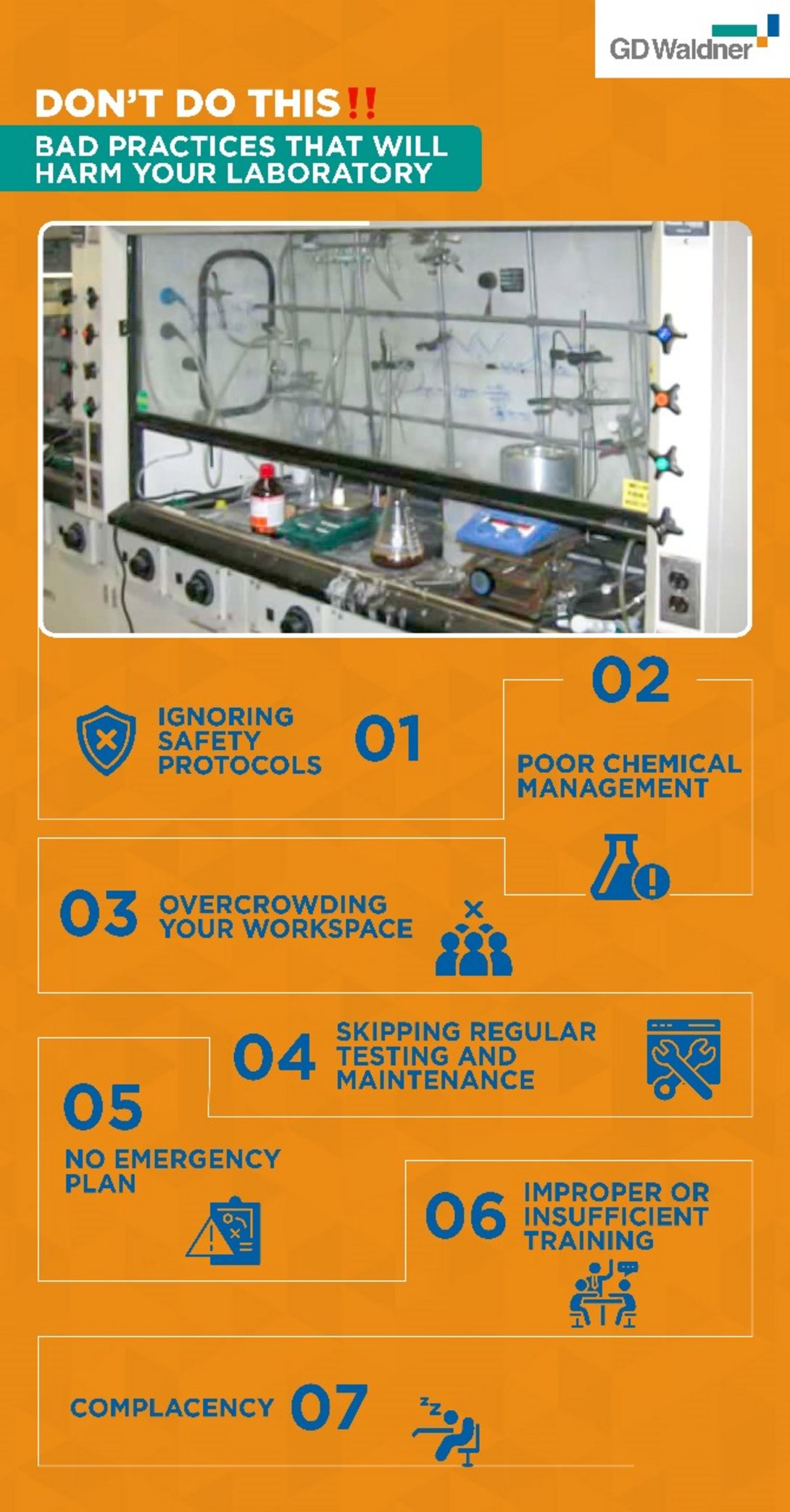Navigating the intricacies of laboratory practices is a constant journey, and today, we're steering towards a different course. Let's delve into the essential cautions—what to avoid at all costs. While we often highlight best practices, understanding what NOT to do can be just as crucial, if not more.
1. Ignoring Safety Protocols: Okay, this one is a no-brainer. The fastest way to invite danger is to ignore or bypass safety protocols. They’re there for a reason - to keep you and your lab mates safe. No experiment or procedure, however urgent or exciting, is worth risking your safety or others..
2. Poor Chemical Management: Haphazard handling and improper storage of chemicals can lead to contamination, accidental reactions, and exposure to harmful substances. Or worse yet to a fire or explosion. Always follow guidelines on proper storage, usage, and disposal. And remember, the lab isn’t the place to mix and match at random!
3. Overcrowding Your Workspace: Clutter is not just an annoyance - it can be downright dangerous in a lab. Overcrowding your workspace with equipment, samples, and waste can lead to accidents like spills, broken glassware, or worse. Storage of chemicals in unventilated under bench storage can lead to corrosion issues also.
4. Skipping Regular Testing and Maintenance: Regular testing and maintenance isn’t just a ‘nice to have’, it’s a ‘must-have’. Neglected equipment can malfunction, break down, or become hazardous. A little time spent on upkeep can save you a lot of time (and headache) dealing with bigger problems
down the line.
5. Improper or Insufficient Training: Without proper training, lab users are more likely to make mistakes, misuse equipment, or handle materials incorrectly. And remember - training isn’t a one-time thing, but an ongoing process. Stay updated, stay informed, stay safe. And don’t forget
that 25% of hoods with loss of containment are caused by user work practices.
6. No Emergency Plan: If you don’t already have an emergency plan in place, stop reading this post and go make one. I mean it. Labs are high-risk environments and when things go south, you need to know how to react swiftly and effectively. Things are ok until they are not. Having a good plan is
critical to everyone safety.
7. Complacency: The last point, but by no means the least. Complacency is the silent enemy in any lab. “It won’t happen to me” is a dangerous attitude to have. Always be vigilant and mindful of potential risks. But it is more than just this, It is also having an awareness of the risks and understanding what to
do if something goes wrong.
In a nutshell, a safe laboratory is one that has a culture of responsibility, attentiveness, situational awareness, and understanding the hazards and risks. Also have a respect for the tools, substances, and procedures at hand. So, do me a favor, folks: keep these don’ts in mind next time you step into your lab.

